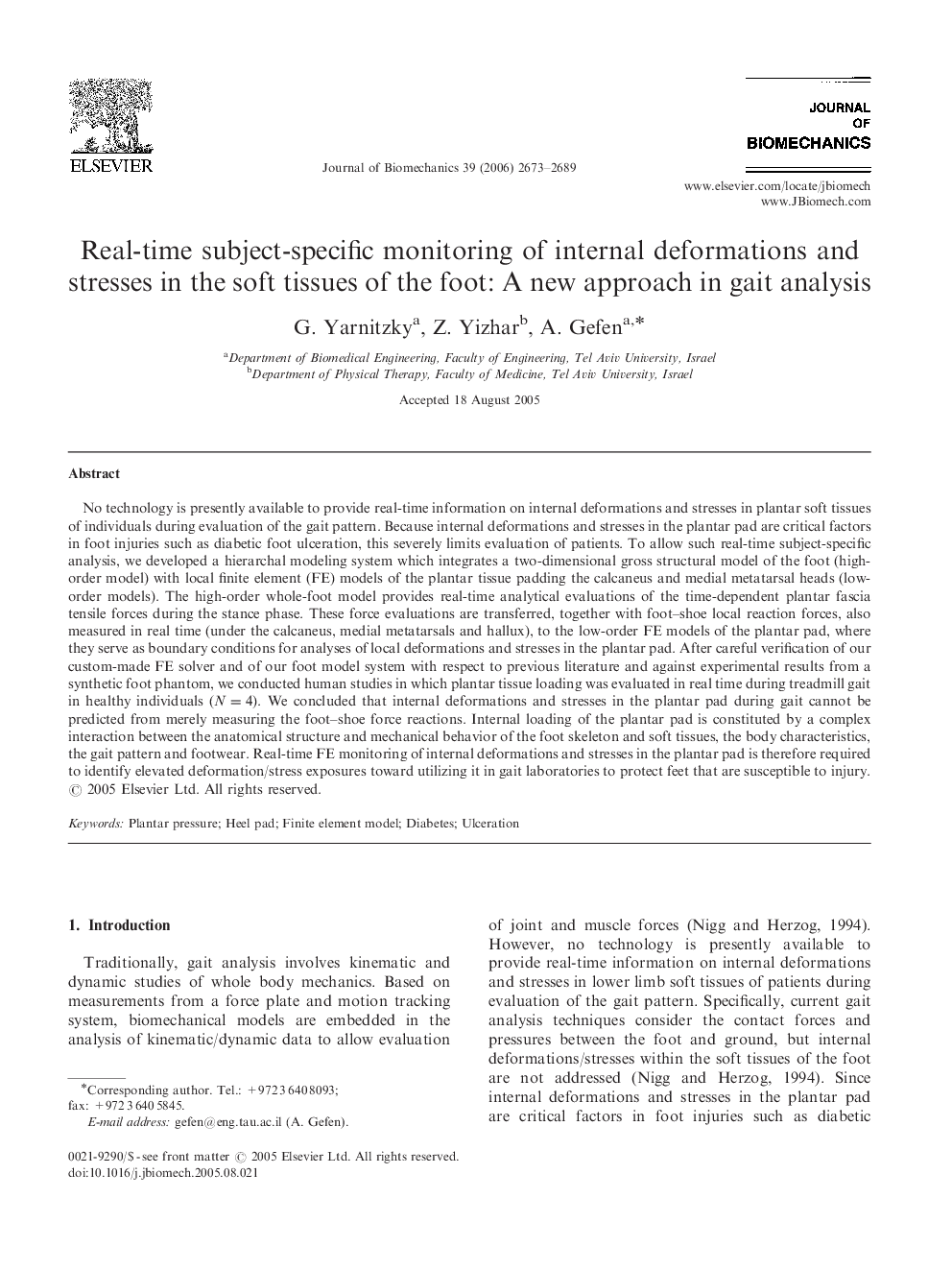| Article ID | Journal | Published Year | Pages | File Type |
|---|---|---|---|---|
| 874695 | Journal of Biomechanics | 2006 | 17 Pages |
Abstract
No technology is presently available to provide real-time information on internal deformations and stresses in plantar soft tissues of individuals during evaluation of the gait pattern. Because internal deformations and stresses in the plantar pad are critical factors in foot injuries such as diabetic foot ulceration, this severely limits evaluation of patients. To allow such real-time subject-specific analysis, we developed a hierarchal modeling system which integrates a two-dimensional gross structural model of the foot (high-order model) with local finite element (FE) models of the plantar tissue padding the calcaneus and medial metatarsal heads (low-order models). The high-order whole-foot model provides real-time analytical evaluations of the time-dependent plantar fascia tensile forces during the stance phase. These force evaluations are transferred, together with foot-shoe local reaction forces, also measured in real time (under the calcaneus, medial metatarsals and hallux), to the low-order FE models of the plantar pad, where they serve as boundary conditions for analyses of local deformations and stresses in the plantar pad. After careful verification of our custom-made FE solver and of our foot model system with respect to previous literature and against experimental results from a synthetic foot phantom, we conducted human studies in which plantar tissue loading was evaluated in real time during treadmill gait in healthy individuals (N=4). We concluded that internal deformations and stresses in the plantar pad during gait cannot be predicted from merely measuring the foot-shoe force reactions. Internal loading of the plantar pad is constituted by a complex interaction between the anatomical structure and mechanical behavior of the foot skeleton and soft tissues, the body characteristics, the gait pattern and footwear. Real-time FE monitoring of internal deformations and stresses in the plantar pad is therefore required to identify elevated deformation/stress exposures toward utilizing it in gait laboratories to protect feet that are susceptible to injury.
Related Topics
Physical Sciences and Engineering
Engineering
Biomedical Engineering
Authors
G. Yarnitzky, Z. Yizhar, A. Gefen,
